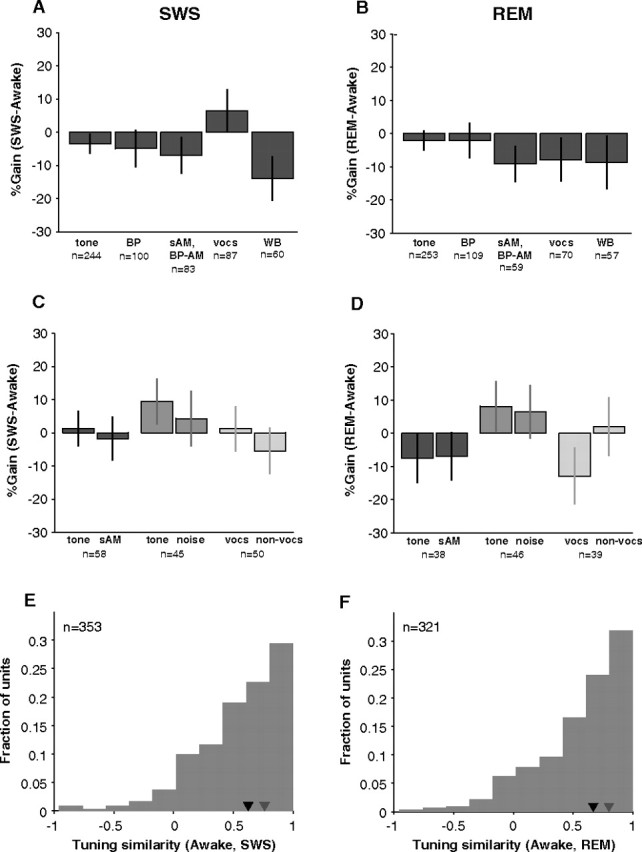Figure 11.

Sleep modulation of all neurons tested across stimulus classes. A, We used five main stimulus types to probe neural responses [tones, bandpass noise (BP), sinusoidal amplitude modulated tones (sAM) or noise (BP-sAM), vocalizations (vocs), and wideband noise (WB)]. In general, gains were somewhat negative but not different from 0% (p > 0.05, bootstrap; n = 10,000 simulations in which awake and SWS firing rates were randomly exchanged) except for wideband noise (p = 0.05, bootstrap). B, Gains in REM for the five main stimulus types were not different from 0% (p > 0.05, bootstrap). C, In many cases, more than one stimulus type was tested on a neuron, and direct comparisons could be made within a neuron. No difference was found in SWS gain for unmodulated versus modulated tones (p = 0.64, n = 58), for tones versus narrowband stimuli (p = 0.47, n = 45), and for vocalizations versus nonvocalization stimuli (p = 0.34, n = 50) (Wilcoxon rank sum) (similarly shaded pairs of bars represent data from two different stimulus types collected in the same neuron). Gain remained near 0% in all cases. D, Within-unit comparisons of the effects of REM did not reveal any difference in sleep gains for modulated (p = 0.95, n = 38), larger-bandwidth (p = 0.98, n = 46), or semantically meaningful (p = 0.22, n = 39) (Wilcoxon rank sum) stimuli. E, The similarity between awake and SWS firing rate profiles (see Materials and Methods) across all stimuli was relatively high (median ρ = 0.63, n = 353; black inverted triangle) but not as high as within-state similarity (median = 0.76, n = 704; gray inverted triangle). F, Awake and REM firing rate profiles across all stimuli also tended to be highly correlated (median ρ = 0.67, n = 321; black inverted triangle).
